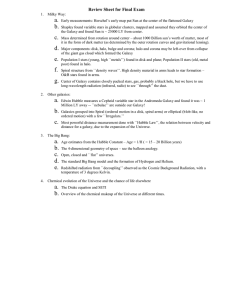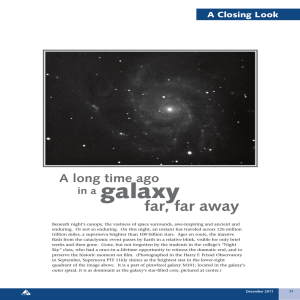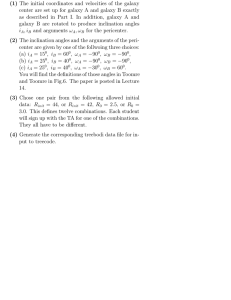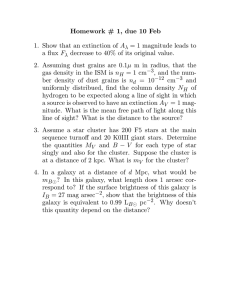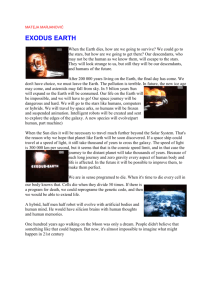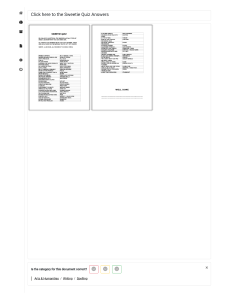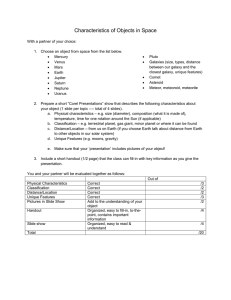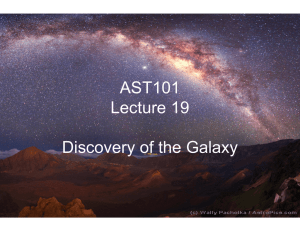Homework # 9 Solutions 1. Do problem 5.8 in the text.
advertisement
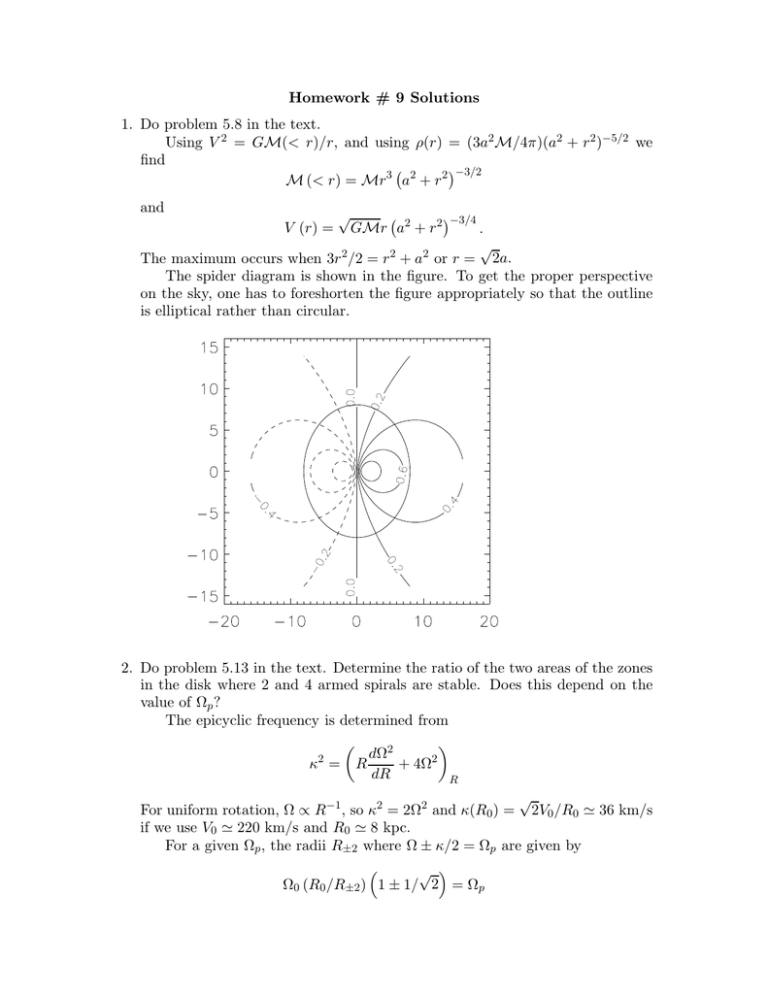
Homework # 9 Solutions 1. Do problem 5.8 in the text. Using V 2 = GM(< r)/r, and using ρ(r) = (3a2 M/4π)(a2 + r 2 )−5/2 we find −3/2 M (< r) = Mr 3 a2 + r 2 and V (r) = √ GMr a2 + r 2 −3/4 . √ The maximum occurs when 3r 2 /2 = r 2 + a2 or r = 2a. The spider diagram is shown in the figure. To get the proper perspective on the sky, one has to foreshorten the figure appropriately so that the outline is elliptical rather than circular. 2. Do problem 5.13 in the text. Determine the ratio of the two areas of the zones in the disk where 2 and 4 armed spirals are stable. Does this depend on the value of Ωp ? The epicyclic frequency is determined from dΩ2 2 2 κ = R + 4Ω dR R √ For uniform rotation, Ω ∝ R−1, so κ2 = 2Ω2 and κ(R0 ) = 2V0 /R0 ≃ 36 km/s if we use V0 ≃ 220 km/s and R0 ≃ 8 kpc. For a given Ωp , the radii R±2 where Ω ± κ/2 = Ωp are given by √ Ω0 (R0 /R±2 ) 1 ± 1/ 2 = Ωp or Similarly R±2 = 1 ± 2−1/2 Ω0 R0 /Ωp . R±4 −3/2 Ω0 R0 /Ωp . = 1±2 The area ratio is 2 2 −3/2 −3/2 1 + 2 − 1 − 2 A4 21/2 1 1 + 2−1/2 + 8−1 − 1 + 2−1/2 − 8−1 = 3/2 = . = 2 2 = 1/2 1/2 −1 −1 A2 2 1+2 +2 −1+2 −2 2 1 + 2−1/2 − 1 − 2−1/2 I believe the text is wrong, but the hint for this problem on page 419 is correct. 3. Do problem 5.15 in the text. Specifically, find i) the radius of the inner edge of the disk in parsecs For an angular size θ in radians, R = Dθ, so R = 0.14 pc. ii) the mass inside this disk M = RV 2 /G = 3.8 × 107 M⊙ iii) and the mean time between collisions of stars assuming each star is 1 M⊙ . The density of 1M⊙ stars is n= 3N = 3.3 × 109 pc−3 4πR3 The mean time between collisions is −1 t ≃ nπR2⊙ V = 1.8 × 108 yr iv) Also find the mean distance between these stars. r = RN −1/3 = 4.1 × 10−4 pc ≃ 85 AU 4. Suppose the true aspect ratio of a type of galaxy was B/A = 1/2. If we observe a large number of these galaxies, each having a randomly oriented inclination i, what is the average aspect ratio q that we would observe? Even if you can’t determine the number, is q larger or smaller than B/A? It should be obvious that the observed aspect ratio is always larger than the true one for any galaxy; a spherical galaxy can never appear oblate, but an oblate galaxy can appear spherical. The observed axis ratio of a galaxy with true aspect ratio B/A observed from an inclination angle i is q q = (B/A)2 sin2 i + cos2 i. The fraction f (q)dq of systems with apparent aspects between q and q + dq is f (q) dq = q qdq q . 2 2 2 1 − (B/A) q − (B/A) R Note that f dq = 1 when integrated between B/A and 1. If all systems have the same B/A, the average q, q̄, is given by the first moment of f : √ Z 1 1 ln 2 + 3 √ ≃ 0.69 , q̄ = qf (q) dq = + 2 4 3 B/A for B/A = 1/2.

